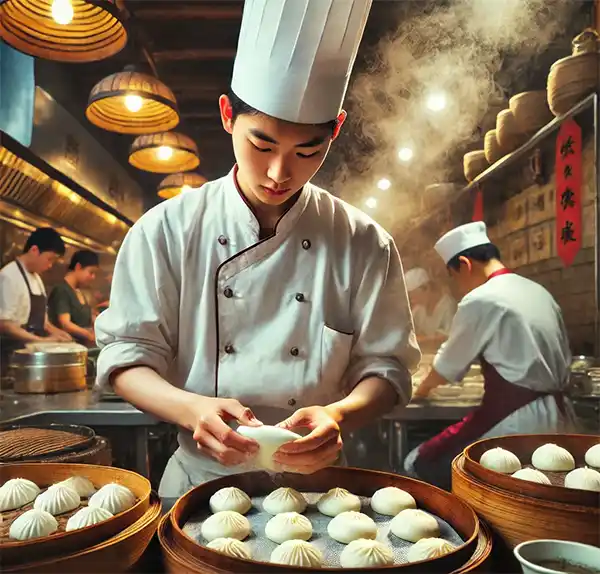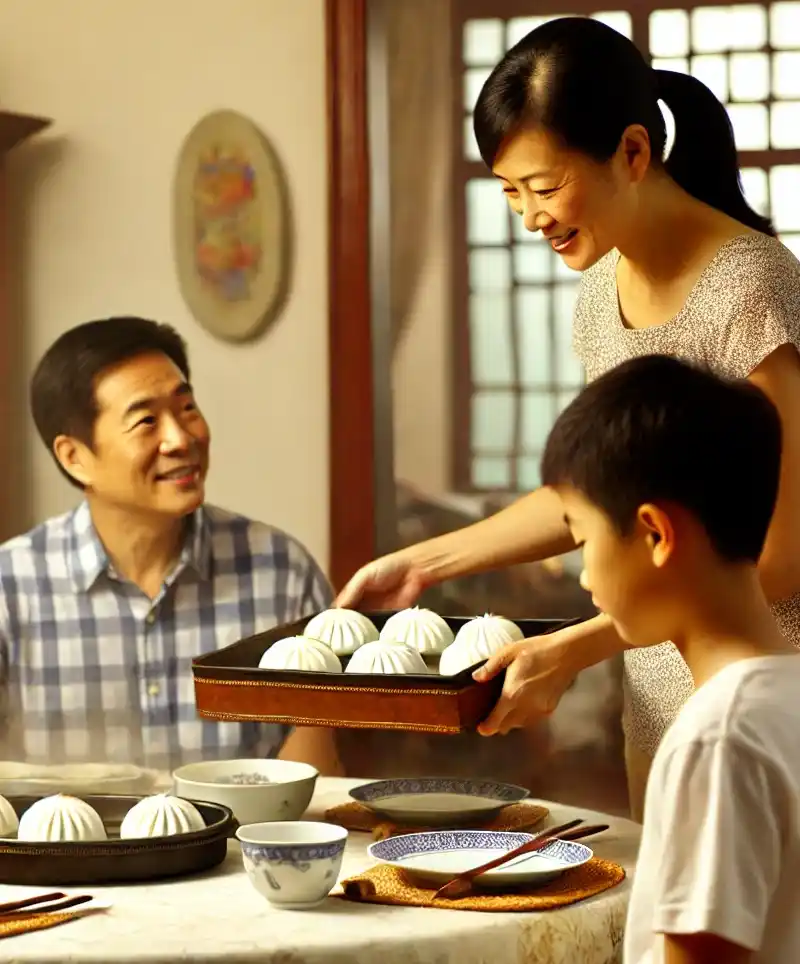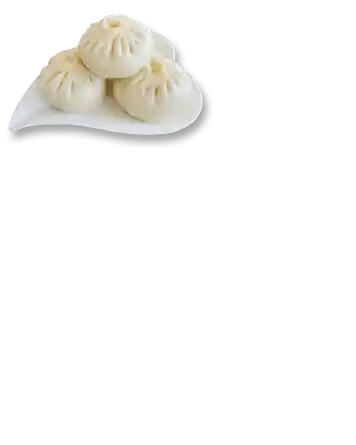A Delicious Look into the World of Chinese Food
When it comes to comfort food, few things can compete with the soft, pillowy perfection of a bao. Whether filled with savory pork, sweet red bean paste, or just about anything else you can dream up, bao is a culinary hug, wrapped up in a neat little package. On National Bao Day, we celebrate this iconic Chinese treat and take a broader look at the rich and diverse world of Chinese cuisine—because, let’s face it, one day dedicated to bao isn’t nearly enough!
What is Bao?
First things first: what exactly is a bao? Also known as baozi or steamed buns, these delightful little pockets of goodness are a staple in Chinese cuisine. Traditionally, bao is made from a simple dough of flour, water, yeast, and sugar. The dough is then filled with a variety of ingredients—ranging from savory meats and vegetables to sweet pastes—and steamed to fluffy perfection.
Bao comes in many shapes and sizes, from the small and delicate dim sum versions to the larger, more robust buns you might find at a street market. And let’s not forget the showstoppers like char siu bao (barbecue pork buns), which are so delicious they should come with a warning label: “May cause obsession and an uncontrollable desire for more bao.”
A Brief History of Bao
Bao has been around for centuries, with roots tracing back to China’s Three Kingdoms period (220–280 AD). According to legend, the bao was invented by military strategist Zhuge Liang, who created the bun as an offering to appease the river gods during a military campaign. Of course, this might be the only time in history that a steamed bun was used as a peace offering—but who can blame them? Bao has been bringing people together ever since.
 Throughout Chinese history, bao has evolved into a versatile food that can be enjoyed at any time of day. From breakfast to late-night snacks, bao has a way of fitting into every meal. And with endless filling possibilities, it’s no wonder that bao remains a beloved staple in Chinese cuisine.
Throughout Chinese history, bao has evolved into a versatile food that can be enjoyed at any time of day. From breakfast to late-night snacks, bao has a way of fitting into every meal. And with endless filling possibilities, it’s no wonder that bao remains a beloved staple in Chinese cuisine.
The Art of Making Bao
Making bao may look simple, but don’t be fooled—there’s an art to creating the perfect bun. The dough must be just right: soft, but not too sticky, with enough elasticity to hold the filling without tearing. And then there’s the filling itself, which requires a delicate balance of flavors. Whether it’s savory, sweet, or something in between, the filling should complement the fluffy dough without overpowering it.
Of course, if you’re making bao at home, there’s always the chance that your first few attempts might look more like lumpy pillows than the smooth buns you see in restaurants. But don’t worry—that’s just part of the bao-making journey. Remember, it’s what’s on the inside that counts (both in life and in bao).
Bao and Beyond
While bao is certainly worthy of its own day of celebration, it’s just one delicious morsel in the vast world of Chinese cuisine. From the fiery flavors of Sichuan to the delicate dim sum of Cantonese cuisine, Chinese food is a culinary adventure that spans thousands of years and countless regional variations.
Take, for example, the legendary Peking duck, with its crispy skin and tender meat, often served with thin pancakes, hoisin sauce, and scallions. Or consider the humble dumpling, which, like bao, can be filled with a myriad of ingredients and cooked in a variety of ways—steamed, boiled, or pan-fried. And let’s not forget the noodle dishes, like hand-pulled noodles or zhajiangmian, which are as much a joy to watch being made as they are to eat.
One of the most fascinating aspects of Chinese cuisine is its emphasis on balance and harmony. The five basic flavors—sweet, sour, salty, bitter, and umami—are carefully combined to create dishes that are not only delicious but also nourishing. It’s food that’s meant to feed both the body and the soul, with each bite offering a symphony of tastes and textures.
The Cultural Significance of Bao
Bao isn’t just a tasty treat; it’s also a food rich in cultural significance. In Chinese culture, food is often associated with symbolism, and bao is no exception. The round shape of bao is said to represent harmony and unity, making it a popular choice for family gatherings and celebrations. Whether you’re enjoying bao during the Lunar New Year, at a wedding, or just as a quick snack, there’s always a sense of tradition and togetherness that comes with every bite.
In fact, bao has become so beloved that it’s even made its way into popular culture. Take, for example, Pixar’s short film Bao, which tells the story of a Chinese-Canadian mother who forms an emotional bond with a dumpling that comes to life. It’s a heartwarming tale that captures the deep connection between food and family—and if you’ve seen it, you know that it might just bring a tear to your eye (and a craving for bao to your stomach).
How to Celebrate National Bao Day
On National Bao Day, there are plenty of ways to indulge in this delicious Chinese delicacy:
- Make Your Own Bao: Feeling adventurous? Try making bao at home! There are plenty of recipes available online, ranging from traditional pork-filled buns to creative modern variations. Just remember, practice makes perfect—so if your first batch doesn’t turn out quite right, don’t give up. You’ll be a bao master in no time.
- Visit a Local Chinese Restaurant: If making bao sounds like too much work, why not visit a local Chinese restaurant? Many restaurants offer a variety of bao, from classic char siu bao to more unique offerings. Plus, you’ll be supporting local businesses—talk about a win-win!
- Host a Bao Party: Gather some friends and family for a bao-making party. Set up a bao station with different fillings and let everyone try their hand at making their own buns. It’s a fun and interactive way to celebrate, and you’ll get to enjoy the fruits of your labor together.
- Learn About Chinese Cuisine: Take some time on National Bao Day to learn more about Chinese cuisine and its rich history. Whether you read a book, watch a documentary, or take a cooking class, expanding your knowledge will only deepen your appreciation for the delicious food on your plate.
National Bao Day is more than just an excuse to eat your weight in steamed buns (though we fully support that). It’s a day to celebrate the rich culinary traditions of Chinese food, from the humble bao to the wide array of dishes that make Chinese cuisine one of the most beloved in the world.
So, whether you’re a bao enthusiast or a newbie to the world of steamed buns, take some time on National Bao Day to savor the flavors, enjoy the tradition, and maybe even try your hand at making some bao yourself. After all, there’s no better way to celebrate than with a bao in hand and a smile on your face—because when it comes to delicious food, it’s safe to say there’s never bao-ter.
Please Share our Content






 Throughout Chinese history, bao has evolved into a versatile food that can be enjoyed at any time of day. From breakfast to late-night snacks, bao has a way of fitting into every meal. And with endless filling possibilities, it’s no wonder that bao remains a beloved staple in Chinese cuisine.
Throughout Chinese history, bao has evolved into a versatile food that can be enjoyed at any time of day. From breakfast to late-night snacks, bao has a way of fitting into every meal. And with endless filling possibilities, it’s no wonder that bao remains a beloved staple in Chinese cuisine.








 "Sláinte!" is a traditional Irish expression used as a toast, equivalent to "Cheers!" in English.
"Sláinte!" is a traditional Irish expression used as a toast, equivalent to "Cheers!" in English.